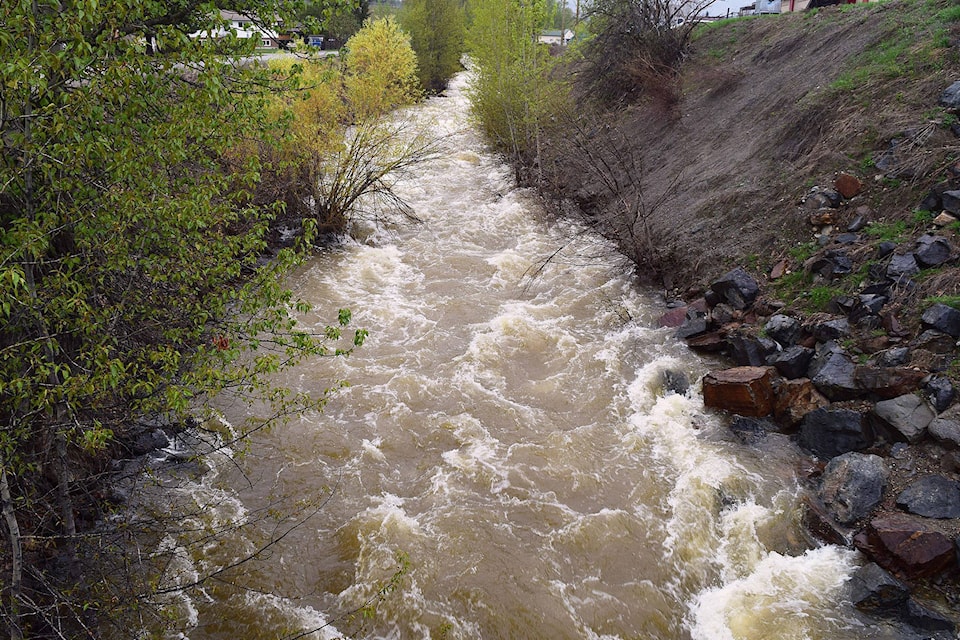Cooler temperatures in the first half of April, and higher precipitation through the month in some regions, including the Kootenays, has led to extremely high snow packs, according to the May 1 snow survey (published on May 7) from the BC Rver Forecast Centre.
The East Kootenay snow pack is at 150 per cent of normal, and that is low compared to other areas. The Upper Fraser West area is at 264 per cent of normal, the Okanagan at 206 and the Boundary region at 238.
The average snow pack across the province is 168 per cent of normal, much higher than the 127 per cent average at the beginning of April.
The report notes that although the values are historically high in some areas, these high values can reflect the delay in the melt season. Snow melt is occurring rapidly now as warm temperatures have arrived.
“By May 1st, 100 per cent of the annual BC snow pack has typically accumulated. For most areas, the transition from snow accumulation to snow melt generally occurs in the middle of April; this transition began at the end of April this year. In low-to-mid elevations snowmelt was rapid over the last week of April and into early May, leading to flooding in many midelevation watersheds across the BC Interior.
Snow pack is one element of seasonal flood risk during BC’s freshet season, the report says. Weather patterns during the snow melt season play a critical role in whether or not flooding occurs. Intense or prolonged rainfall and extreme temperatures are important factors that can lead to flooding, even for areas with a near normal snow pack. Weather patterns forecasted over the next 10 days indicate the potential for deteriorating river conditions in most areas of the province. Typically the freshet flood season in British Columbia lasts from early May to lateJune, and is occurring earlier this year. There is still abundant snow at higher elevations to maintain seasonal flood risk for another month or more.
Many areas that were affected by wildfires last year have been experiencing flooding already this spring. Areas which have higher elevation terrain and may still be susceptible to increased flood risk due to the fires include the Chilcotin River, Deadman River and areas in the upper Kootenay River.
